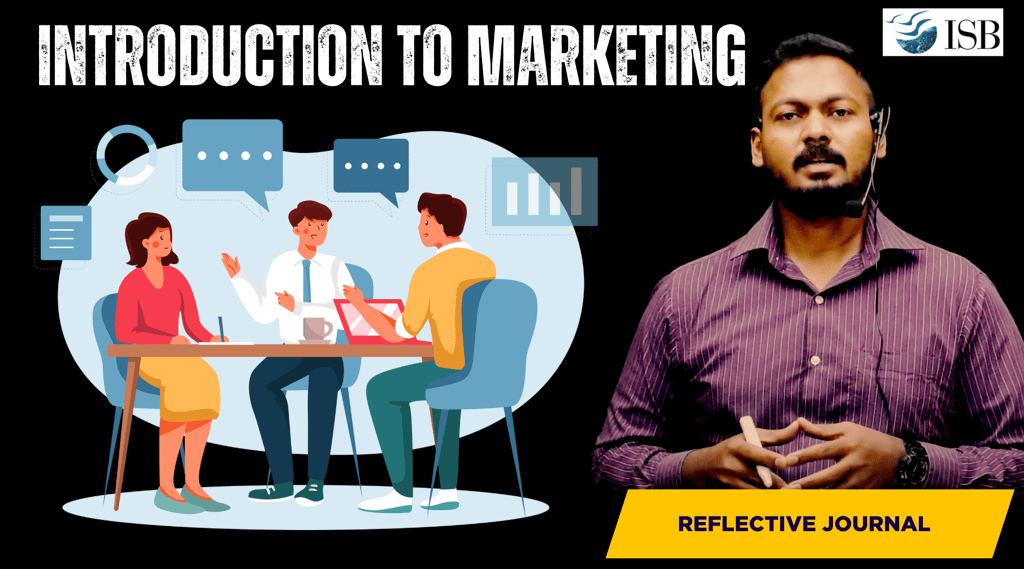Introduction to Marketing
Marketing is everywhere. From the toothpaste you use in the morning to the app you downloaded last night, marketing influences what we notice, trust, choose, and recommend.
Indra kumar
7/10/20253 min read


Marketing is everywhere. From the toothpaste you use in the morning to the app you downloaded last night, marketing influences what we notice, trust, choose, and recommend. At its heart, marketing is not just about selling, it's about understanding people, solving problems, creating value, and building long-term relationships.
The term marketing comes from the word market, meaning a place where buyers and sellers exchange goods and services. But in today’s world, that exchange isn't limited to a physical space it happens across screens, devices, emotions, and experiences. Whether it’s a street vendor in Karol Bagh, New Delhi shouting about his mangoes or a digital ad on Instagram promoting an EdTech course, the essence is the same communicating value to the right audience.
The Evolution of Marketing
Barter system : A fisherman trades his catch for rice. He must convince others his fish are fresh. That’s positioning.
Industrial Revolution: Mass production leads to mass marketing. Flyers, posters, radios begin to carry product messages.
Post-WWII Era: The "Mad Men" era storytelling becomes key, brands are born.
Digital Age: Data-driven marketing, influencers, SEO, AI.
Modern marketing is a blend of psychology, storytelling, technology, and strategy. Legendary marketing professor Philip Kotler defined marketing as “a human activity directed at satisfying needs and wants through exchange processes.” This definition, although coined in a pre-digital era, is more relevant than ever.
Today, marketing has evolved from being product centric to customer-centric. It’s no longer about pushing products, but about creating genuine value. Brands like Amul have succeeded because they’ve become part of Indian culture not just by selling butter, but by telling witty, timely stories that connect emotionally with people.
As a beginner in digital marketing, it is crucial to understand the core principles of traditional marketing, because digital marketing is not a new subject, but a new medium. Without understanding the timeless ideas of trust, attention, positioning, and persuasion, your digital strategies will lack depth.
The Purpose of Marketing
The ultimate goal of marketing is to drive growth not just in sales, but in customer relationships, brand loyalty, and market trust. Marketing achieves this by identifying target audiences, understanding their needs, crafting messages that resonate, delivering those messages through the right channels, and continuously measuring the impact.
It's not just about promoting what exists. Great marketers help shape what should exist. Consider Flipkart’s early campaign of “Big Billion Days.” It wasn’t merely a sale it was a cultural moment. They created urgency, exclusivity, and digital first excitement. Marketing, at its best, does not interrupt life it becomes part of it.
Key Functions of Marketing
Marketing has several interconnected functions that make it a strategic pillar of any organization.
These include:
Market research: Understanding consumer behaviour, trends, and competitors.
Product development: Ensuring the product fits the needs of the market.
Branding: Building a distinctive identity and emotional connection.
Promotion: Creating awareness and persuading people to act.
Distribution: Making the product accessible where the target customer is.
Customer relationship management: Building long-term loyalty and engagement.
Marketing, therefore, is not just a department. It's a philosophy that runs through every part of a business.
Traditional vs Digital Marketing: A Strategic Evolution
Let’s explore how traditional marketing compares with digital marketing using a simple table:
Over time, this evolved into 7Ps (including People, Process, and Physical Evidence) and later, more human models like 4Cs:
Customer needs (instead of Product)
Cost to satisfy (instead of Price)
Convenience to buy (instead of Place)
Communication (instead of Promotion)
Why is Marketing So Powerful?
Marketing is what helped:
Amul survive and thrive through cooperative milk branding.
Flipkart win hearts by solving India’s cash-on-delivery barrier.
BYJU’S make exam prep a dining table conversation.
Tanishq build emotional stories around festivals and weddings.
Marketing isn’t just a function. It’s the voice of your company. The bridge that connects the demand and supply.
The Psychology Behind Marketing
Every good marketer is a student of Psychology, Sociology & Anthropology!
Why do people buy iPhones every year?
Why do political campaigns use symbols and colours?
Why do jingles stick in our heads?
Because marketing plays on desire, trust, identity, memory, and fear of missing out (FOMO). Even a roadside vendor shouting, “Last few left!” is tapping into FOMO. That’s marketing instinct at work.
“Make your customer the hero of your story.” — Ann Handley.

